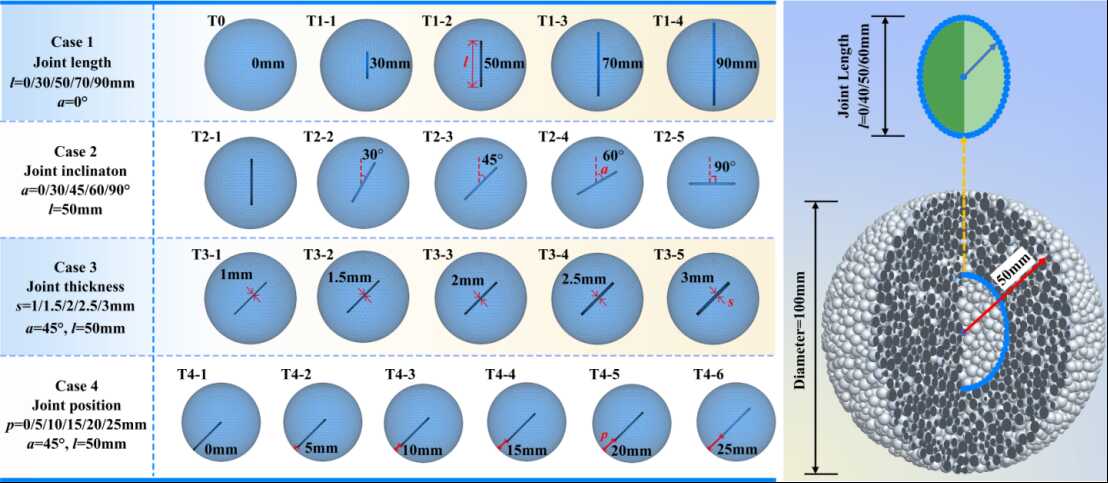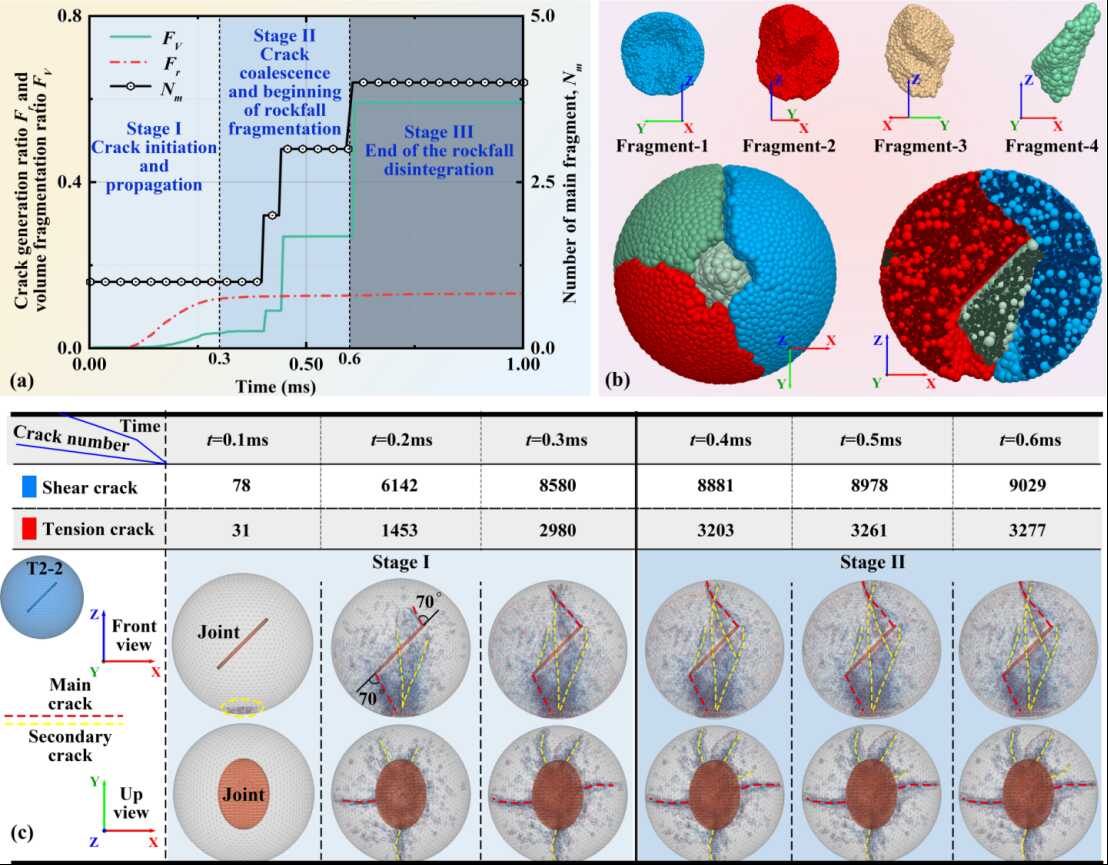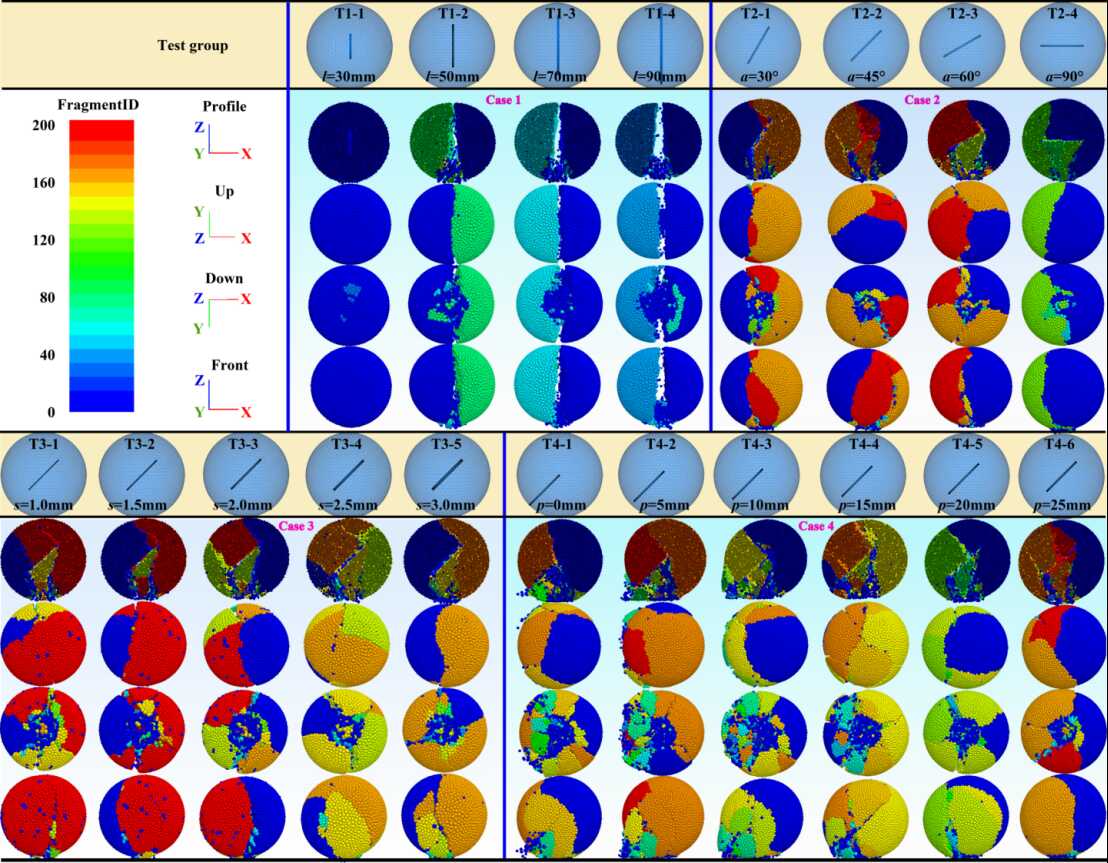Rockfall disasters pose a significant risk in mountainous engineering. In reality, falling rocks are rarely intact rock blocks; instead, they often contain numerous pre-existing joints (i.e., natural fractures). These internal structures critically determine whether and how a rock breaks upon impact with the ground. Such fracturing not only alters the rock’s motion trajectory but also increases the unpredictability of the hazard. However, most existing studies adopt continuum-based models, which struggle to capture the fracture paths guided by internal jointing.
To address the above issue, Professor WU Yong and his student ZHAO Yongjie, from the research team led by He Siming at the Institute of Mountain Hazards and Environment, Chinese Academy of Sciences, conducted a study using the Discrete Element Method (DEM) to investigate the effects of three-dimensional joint structures on the impact fragmentation behavior of falling rocks. They proposed quantitative indicators such as the “volume fragmentation ratio” and revealed the critical role of jointing in influencing failure patterns and energy dissipation. By integrating laboratory experiments with numerical simulations, their study explores how geometric characteristics of pre-existing joints—namely length, orientation, thickness, and position—affect the mechanisms of rockfall fragmentation.
The results show that the geometric features of pre-existing joints largely determine the fragmentation mode and energy dissipation during impact. When joint length exceeds a critical threshold (approximately 40% of the rock’s diameter), the rock tends to fracture along the joints. The most intense fragmentation occurs when the joint dip angle is 45°, producing the largest number of primary fragments and the highest volume fragmentation ratio. If the joint thickness approaches the maximum particle radius in the model, cracks are more likely to propagate along the joint, leading to large-scale breakage. Furthermore, joints located near the middle-to-edge region of the rock significantly enhance the overall fragmentation effect, resulting in a more uniform fragment size distribution. The presence of joints also reduces the peak impact force, accelerates crack propagation and failure, and causes a substantial decrease in the rock’s rebound kinetic energy, to about 25% of its initial value. These findings reveal the dominant mechanisms by which joints influence rockfall breakage behavior.
This research was supported by the National Natural Science Foundation of China and Sichuan provincial guidance projects, and was published in the journal 《Computers and Geotechnics》.
https://doi.org/10.1016/j.compgeo.2025.107270

Fig. 1. Schematics of (Left) the cases with various geometric joints and (Right) the 3D details of the joints within the rockfall (Image by WU Yong).

Fig. 2. (a) The evolution of Nm, Fr, and FV with time (b) rockfall disintegration and its fragments (c) changes of crack number in rockfall sample during impact (Image by WU Yong).

Fig. 3. Presentation of the impact fragmentation results (Image by WU Yong)
